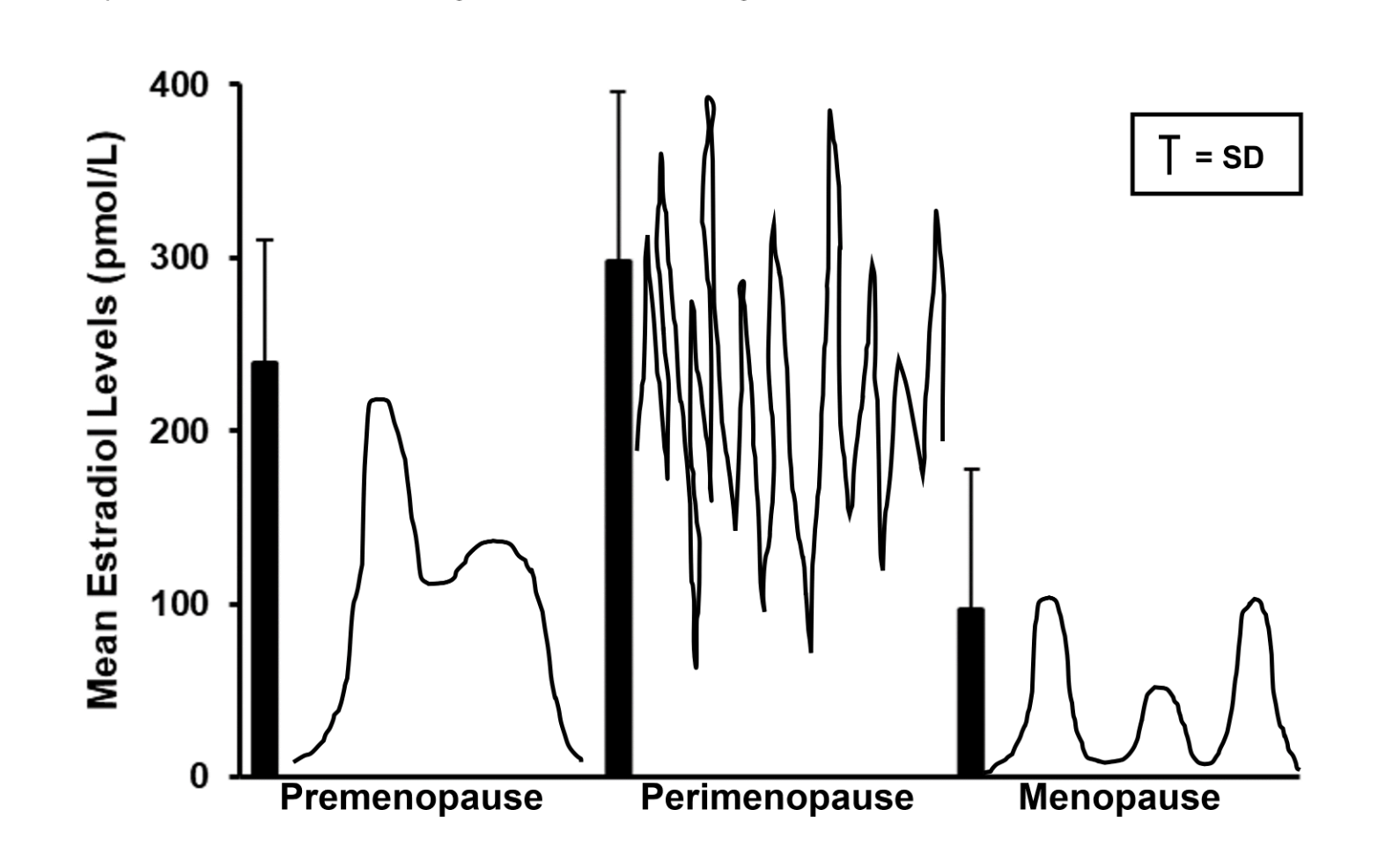Perimenopause: The Transition No One Warns You About — Signs, Symptoms & What You Can Do
Posted by Dr. Amanda Chay, ND on 2025 Sep 17th
What Exactly Is Perimenopause?
Perimenopause is the transitional phase leading up to menopause — your body’s way of slowly winding down its reproductive years. During this time, the number of eggs in your ovaries declines, your hormones can swing unpredictably, and your menstrual cycle often becomes irregular.
This phase can last anywhere from a few years to over a decade and officially ends when you haven’t had a period for 12 months — that’s menopause.
Below is one of my favourite charts detailing the changes in estradiol levels premenopause to perimenopause to menopause. It is from Dr. Jerrilyn Prior’s CEMCOR website and I highly recommend people to take a look at the hormone explanations on the CEMCOR UBC page.

When Does It Start? (Spoiler: It Might Be Sooner Than You Think)
Most women start noticing perimenopausal changes in their 40s, but some may see early signs even in their late 30s. The average age of menopause in Canada is 51, but it varies widely. Around 1 in 100 women will experience menopause before 40 — a condition known as premature ovarian insufficiency.
On average, symptoms last about four years after the final period, but about 10% of women may continue to feel the effects for up to 12 years.
The Many Faces of Perimenopause: Common Symptoms
Perimenopause can feel like an unpredictable guest crashing your life. Around 8 in 10 women will experience some symptoms, which may include:
- Hot flushes/flashes and night sweats (known as vasomotor symptoms)
- Fatigue (that can feel impossible to shake off)
- Irregular or heavy periods
- Mood swings, increased anxiety, or worsening PMS
- Trouble sleeping (insomnia)
- Weight gain, often around the middle
- Joint and muscle aches
- Brain fog — forgetfulness and trouble concentrating
- Vaginal dryness and discomfort during sex
- Reduced libido (sex drive)
- Headaches
These symptoms can impact your energy, confidence, relationships, and even your daily activities.
What Can You Do? Empowering Treatment Options
The good news: You don’t have to just "grin and bear it." There are effective ways to manage symptoms and improve your quality of life:
- Hormone Replacement Therapy (HRT): Can be an option for many women. HRT can help with hot flushes, mood swings, and protect bone health. Most research on HRT has been done on women ages 50-59, so it is important to talk to your healthcare provider to ensure the benefits outweigh the risks.
- Lifestyle upgrades: Prioritize a healthy diet (the mediterranean diet has been shown to reduce perimenopausal symptoms and positively impact body composition), regular exercise, stress management, and good sleep hygiene. Small changes can make a big difference.
- Nutritional supplements: Calcium, vitamin D, and other supplements may help support overall health, especially bone strength — but always check with a healthcare professional first.
- Acupuncture: Some women find relief from symptoms like hot flushes and anxiety through acupuncture.
- Non-hormonal medications: For those who can’t or choose not to use HRT, medications for mood symptoms or sleep disturbances can help.
You’re Not Alone: Work With Your Healthcare Team
Every woman’s perimenopause journey is unique. Partnering with a trusted healthcare provider is key to finding the right combination of treatments for you. Regular check-ups are important to protect your bone and heart health, as declining estrogen levels can increase the risk of osteoporosis and cardiovascular disease.
Takeaway
Perimenopause can feel daunting, but with the right knowledge and support, it doesn’t have to take over your life. By understanding what’s happening and knowing your options, you can navigate this transition with more confidence — and even reclaim your sense of self along the way.
Disclaimer: The information in this article is for informational purposes only and is not medical advice. Always consult your doctor before making any changes to your health, diet, or lifestyle.
References:
- https://cemcor.ubc.ca/
- https://www.uptodate.com/contents/menopause-clinical-features-and-diagnosis?search=perimenopause&source=search_result&selectedTitle=1~72&usage_type=default&display_rank=1
- https://www.uptodate.com/contents/treatment-of-menopausal-symptoms-with-hormone-therapy?search=perimenopause&source=search_result&selectedTitle=2~72&usage_type=default&display_rank=2
